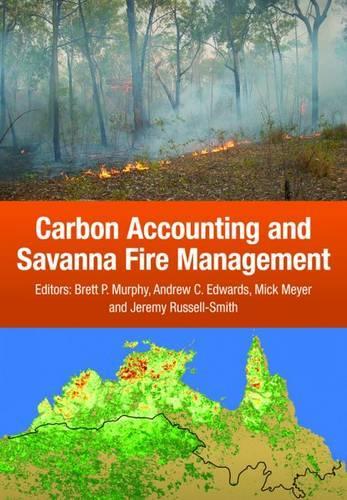
Carbon Accounting and Savanna Fire Management
(Paperback)
Publishing Details
Carbon Accounting and Savanna Fire Management
By (Author) Brett P. Murphy
Edited by Andrew C. Edwards
Edited by CP
Edited by Jeremy Russell-Smith
CSIRO Publishing
CSIRO Publishing
1st June 2015
Australia
Classifications
Professional and Scholarly
Non Fiction
Applied ecology
333.74
Physical Properties
Paperback
368
Width 170mm, Height 245mm
907g
Description
In the context of Australias developing carbon economy, fire management helps to abate emissions of greenhouse gases and is an important means of generating carbon credits. The vast high-rainfall savannas of northern Australia are one of the worlds most flammable landscapes. Management of fires in this region has the potential to assist with meeting emissions reduction targets, as well as conserving biodiversity and providing employment for Indigenous people in remote parts of Australias north. This comprehensive volume brings together recent research from northern Australian savannas to provide an internationally relevant case study for applying greenhouse gas accounting methodologies to the practice of fire management. It provides scientific arguments for enlarging the area of fire-prone land managed for emissions abatement. The book also charts the progress towards development of a savanna fire bio-sequestration methodology. The future of integrated approaches to emissions abatement and bio-sequestration is also discussed.
Author Bio
Brett P. Murphy is a tropical fire ecologist at the University of Melbourne, whose work focuses on the broad question of how to optimally manage landscape fire for the conservation of biodiversity, especially in the vast savanna landscapes of northern Australia. His current research examines the role of altered fire regimes in the ongoing decline of northern Australian mammals, and the role of fire in controlling the structure and function of northern Australian savanna vegetation.
Andrew C. Edwards is a fire ecologist and remote-sensing specialist at the Darwin Centre for Bushfire Research at Charles Darwin University. He played a central role in developing the extensive spatial datasets for the groundbreaking West Arnhem Land Fire Abatement project. This work underpinned the development of the first Savanna Burning methodology for greenhouse gas emissions abatement. He was also part of the team that undertook extensive survey work to describe the seasonality of patchiness and fire severity, and the accumulation of bio-fuels for that methodology. Andrew has since developed satellite-derived fire severity mapping.
Mick Meyer is an atmospheric scientist at the CSIRO with 35 years experience measuring emissions and uptake of pollutants and greenhouse gases and developing methods for their accounting. Mick is the author of the current national accounting methodologies for greenhouse gas emissions from bushfires, and is an active contributor to UN and IPCC accounting methodologies for combustion processes.
Jeremy Russell-Smith is a consultant ecologist with 25 years experience in northern Australia. He coordinates fire research programs for the Darwin Centre for Bushfire Research and works on other natural resource management projects in South-East Asia. He has an abiding interest in the ecology, biogeography and management of monsoon rainforests and sandstone heaths. He often works with Indigenous people on landscape and resource management issues.
